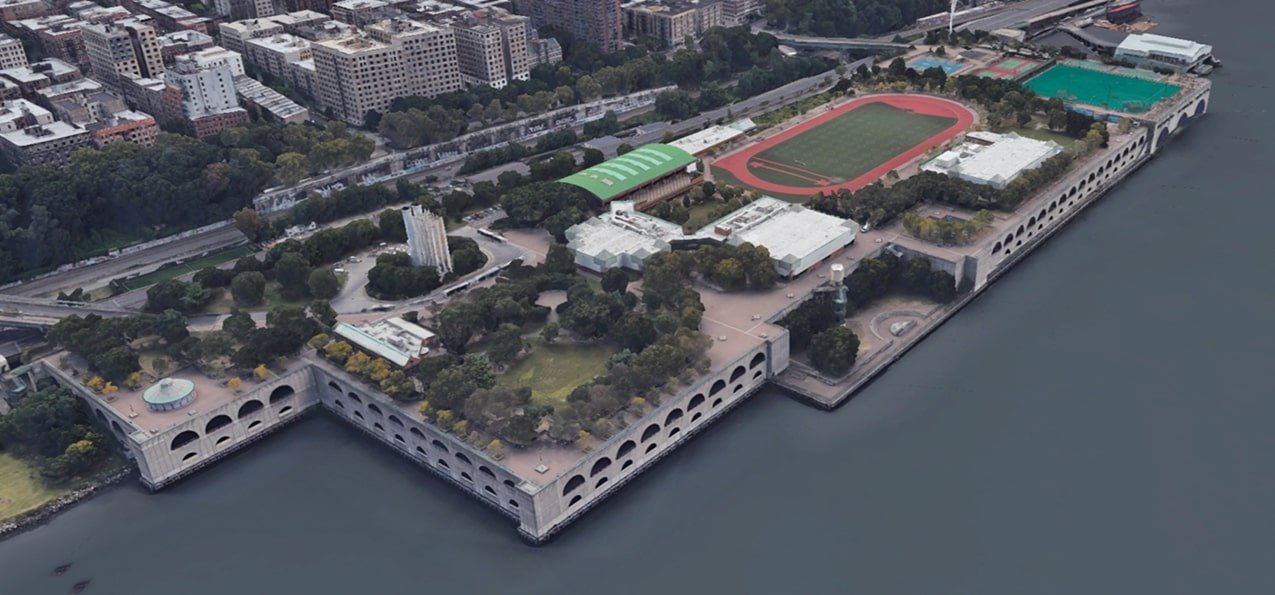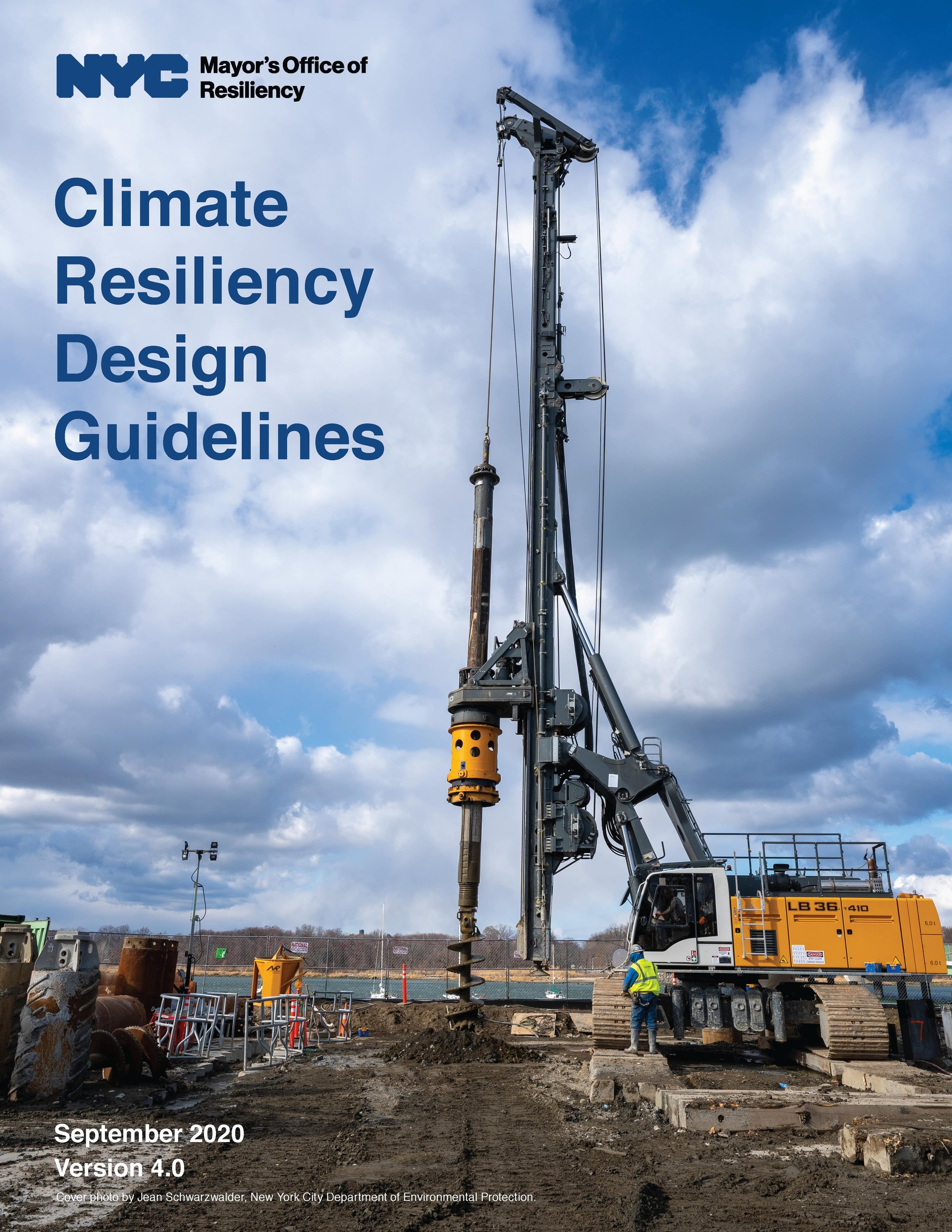Investment Priorities
1. Maintain and modernize our infrastructure and facilities
2. Strengthen public health and safety
3. Support economic growth and preserve affordability
4. Broaden access to education and cultural resources
Investment Priority 1:
Maintain and modernize our infrastructure and facilities
The City makes substantial investments to bring our infrastructure and buildings to a state of good repair, promote energy efficiency, incorporate modern design standards, modernize our existing city assets, and ensure sustainability and resiliency. We can more easily sustain and improve the quality of life in all neighborhoods when our physical infrastructure is durable, efficient, and designed to meet future needs.
Protecting new yorkers through improvements and replacements
Through regular maintenance, we extend the life of city assets and make sure that we are providing the highest level of service to New Yorkers today. For example, over the next 10 years, DOT is planning to commit more than $16 billion toward repairs and replacements that will ensure the safety of its over 800 bridges and tunnels for decades to come.
This TYCS also includes targeted investments in facilities that provide housing and healthcare services for New Yorkers. DHS will spend $70 million to modernize fire safety systems at 21 city-owned homeless shelters. The City has also committed $2.2 billion toward NYCHA’s Capital Action Plan, which is designed to implement repairs and reduce its future capital needs, and $4.4 billion to NYCHA’s Ten-Year Capital Plan (2024-2033) for infrastructure improvements, major building modernizations and upgrades, and in-unit apartment repairs. In collaboration with residents, NYCHA is establishing the groundbreaking Public Housing Preservation Trust to renovate 25,000 apartments, with more to come, which will dramatically improve residents’ quality of life while preserving all their rights and protections and providing economic opportunities. The high-quality renovations include the latest sustainable technologies and will be completed faster than before thanks to improved procurement processes. Additionally, DOHMH is renovating neighborhood health center buildings. For example, improvements to the Corona Health Center include an ADA-accessible entrance and a new insulated roof to reduce the heat island effect.
For more detail on the City’s heat mitigation investments as a response to climate change, see, Guiding Principle 3.
DEP North River Wastewater Resource Recovery Facility Cogeneration and Electrification Program
The North River Wastewater Resource Recovery Facility (WWRF) in West Harlem originally went into service in 1986. It is designed to treat 170 million gallons per day (MGD) when it is not raining and 340 MGD during wet weather due to precipitation and street runoff.
The North River WRRF Cogeneration and Electrification Program includes the replacement of the existing engine-driven main sewage pumps and blowers, which are near the end of their useful life, with electric motor-driven units. The program also includes the installation of cleaner-burning cogeneration engine generators that will improve air quality and reduce the City’s carbon footprint. The generators are designed with a heat recovery option that would be used to provide space heat as well as heat for the sludge digestion process. This would improve the operation and reliability of the facility and reduce greenhouse gas emissions by nearly 50 percent and carbon monoxide emissions by 45 percent.
The TYCS allocates nearly $1.2 billion for this project which will also include flood protection, structural, electrical, and fire alarm upgrades, and a new electrical service to Riverbank State Park.
DEP’s website provides a deeper look at our wastewater treatment system, including helpful summary infographics.
North River Wastewater Resource Recovery Facility

- Source: DEP
Promoting energy efficiency
DCAS is responsible for purchasing the energy necessary to operate all city buildings including schools and community colleges, cultural institutions, libraries, offices, police precincts, fire houses, and wastewater resource recovery facilities. Since buildings and other facilities constitute close to 90% of municipal emissions, DCAS is leading the way in emissions reductions and energy efficiency efforts.
Over the last nine years, DCAS has invested over $775 million in energy efficiency and clean energy generation projects. Investments have decreased energy use by about 3.7 million MMBtus (roughly the amount of energy used by 250,000 city residences) saving almost $115 million in annual energy costs. Emissions were also reduced by over 325,000 metric tons of carbon dioxide, the equivalent of removing over 70,000 cars from the road.
Through fiscal year 2021, the most recent year for which data is available via the City’s Inventory of Greenhouse Gas Emissions, the city government has reduced its greenhouse gas emissions by 26% from the fiscal year 2006 baseline, compared to 18% for the private sector. Over the next 10 years, we will continue to make aggressive investments in more efficient and clean energy generation infrastructure.
DCAS has been allocated $4.3 billion to meet near-term goals of energy and emission reductions and ensure that the City is on track to meet the longer-term goals of an 80% reduction in its emissions and carbon neutrality by 2050. These types of investments are expected to continue paying dividends by avoiding energy costs, catalyzing green jobs, enhancing social infrastructure, improving air quality and public health, and environmental justice initiatives.
Leading the Charge
In October 2022, the City announced “Leading the Charge” – a plan that aims to combat climate change, create healthier learning environments, improve air quality in communities disproportionately burdened by climate change and environmental injustice, and help develop the next generation’s green workforce. The plan commits $4 billion to make new schools all-electric and electrify one hundred existing schools, prioritizing environmental justice communities. Thus far, DCAS has committed funding to initiate or complete the full electrification of the one hundred existing schools and to upgrade lighting systems at 800 schools, approximately half of all DOE facilities, by 2026.
The program, shaped through a partnership between DCAS, SCA, and DOE, is expected to end the City’s use of highly polluting No. 4 heating oil in schools. The City will also support training and development for the students who will become the next generation of the green workforce. P.S. 5 - Dr. Ronald McNair Elementary School in Bedford-Stuyvesant, Brooklyn, will become the City’s first existing school to eliminate the use of fossil fuels and provide all-electric heating.
See Guiding Principle 3 for detail on our sustainability and resiliency-related investments.
Incorporating modern design standards
We are continually improving the design of our infrastructure to meet long-term needs. The City is implementing new standards for resiliency, public health, and accessibility. For example, agencies are adapting their design practices and standards to promote efficiency. DDC has implemented Office Master Specifications (OMS), a cloud-based digital specification writing platform to promote the quality and efficient design of public buildings by reducing constructability challenges, streamlining building code compliance, reducing review time, and reducing the overuse of costly, non-standard materials.
To support a more efficient construction phase, DDC has also launched several key tools that foster collaboration and innovation. Developed in coordination with OMB and the Comptroller, the Expanded Work Allowance program allocates funding at the beginning of a project for certain types of change orders to ensure that construction can advance despite predictable changes. DDC has piloted early completion incentives to encourage contractors’ innovation in speeding work and has incorporated cost adjustments to help contractors cope with price fluctuation without inflating bid prices. These tools together are expected to streamline the construction phase and are now being rolled out citywide.
Citywide Design Initiatives
Climate resiliency design guidelines
In April 2017, the City released the Climate Resiliency Design Guidelines (“the Guidelines”), which established guidance on how to use climate change science in the planning, design, construction, and renovation of city facilities. The Guidelines provide the City’s engineers and architects with step-by-step instructions necessary to design for projected changes in temperature, precipitation, and sea level. The creation of the Guidelines was a seminal step toward integrating resiliency as a core principle in the City’s capital program, with city agencies beginning to integrate them into their standard operating procedures for design and procurement. We are taking another transformative new step toward ensuring resilient city assets.
In 2021, Local Law 41 was passed to create a five-year pilot program of the Guidelines and develop a new resiliency scoring metric for capital projects. The pilot program works with 40 projects across 20 agencies to apply the Guidelines’ resilient design criteria, develop a new resiliency scoring system, and test methods for determining the most cost-effective approaches to use in the future. After the conclusion of the five-year pilot program in 2026, the City will be required to apply the Guidelines to all applicable capital projects via the resiliency score, making our built environment more resilient to extreme weather and climate change, while promoting the health, safety, and prosperity of all New Yorkers.
Building from the Guidelines and phasing in of Local Law 41, HPD has embedded climate risk-specific resilient design criteria into its Design Guidelines for New Construction and Preservation and built resiliency screenings and recommendations into needs assessments for retrofits. These strategies will facilitate the long-term safety of residents and buildings from climate hazards and provide other benefits like energy efficiency, improved occupant health, and access to critical amenities like broadband and cooling.
Active design guidelines
The City recognizes that the design of the built environment in which New Yorkers live, work, and recreate impacts all aspects of health. The City’s Active Design Guidelines (2010) provides a set of evidence-based design guidelines for how the design of buildings, streets, and neighborhoods can be leveraged to prevent noncommunicable diseases and promote overall health, particularly physical activity. DOHMH is working to expand and update the original guidelines to reflect their role in promoting mental and social health, racial equity, community engagement, climate resiliency, and environmental justice. ADG 2.0 is expected to be released in 2023. The City will utilize the ADGs and the upcoming ADG 2.0 to prioritize and implement healthy and equitable design practices and strategies in all capital projects.
Pedestrian Mobility Plan
In 2022, DOT launched a Pedestrian Mobility Plan detailing a data-driven framework to identify pedestrian needs and provide design guidelines. The plan informs how we design our sidewalks and streets, building on existing safety and accessibility guidelines for pedestrian comfort and convenience. Super Sidewalks is a program developed from the Pedestrian Mobility Plan that focuses on addressing the need for more pedestrian space in areas with high foot traffic. Capital projects that construct Super Sidewalks create a flush and continuous walking surface that relocates amenities such as streetlights, hydrants, and benches to increase pedestrian road share.
Climate Resiliency Design Guidelines report cover

- Source: MOCEJ
Modernizing facilities and equipment
Beyond maintaining existing assets in a state of good repair, the City continuously updates its facilities and equipment to ensure that they are meeting the evolving needs of New Yorkers. Neighborhood plans provide an opportunity to identify needed facilities for a community. As part of the implementation of the Bay Street Neighborhood Plan, the new Mary Cali Dalton Recreation Center will provide important health and wellness resources to Staten Island’s diverse North Shore community. The new 45,000 square-foot NYC Parks facility will include basketball courts, multipurpose areas, fitness and cardio rooms, a covered garage, and electric vehicle charging. This will be NYC Parks’ first design-build project, which will allow for cost savings to the City and a faster development timeline.
The City is also committed to closing the jails on Rikers Island and investing in four modern borough-based jails (BBJ). The modernization of the City’s jails is focused on creating a humane and productive environment.
The BBJ program will place detained individuals closer to their communities and strengthen connections to families, attorneys, courts, medical and mental health care, and faith and community- based organizations. The four new facilities will be designed to foster safety and well-being for both those incarcerated and for staff, providing space for quality education, health, and therapeutic programming. Being closer to home and transit will enhance the network of support systems for people who are detained and help prevent future returns to jail.
DDC, MOCJ, and DOC engaged an independent peer review comprised of renowned architects and designers to guide the City’s design process, complementing an extensive public review process engaging local neighborhood leaders, civic associations, and community boards to provide input on the design. The authorization to use design-build for this program encourages innovative approaches and cost-efficient project delivery with a shorter timeline from design initiation to completion.
See Guiding Principle 1 for more information on the design-build project delivery.
